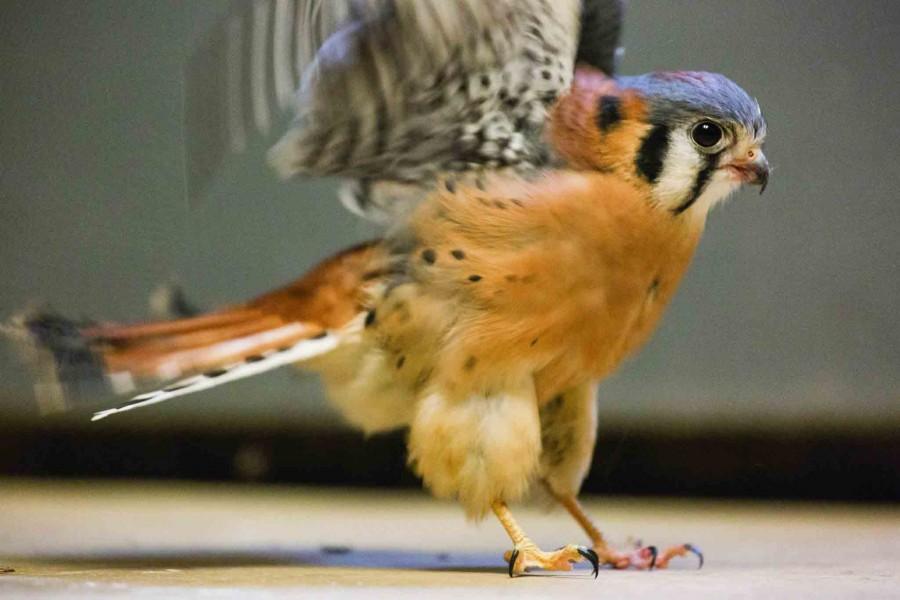Raptor Rehabilitation: There are raptors in our neighborhood
Chester, an American Kestrel (Falco Sparverius), is currently the only resident of the raptor rehabilitation facility at IVCC. Chester was obtained from a Lasalle family after he was orphaned at birth. The rehabilitation center has had him for four years now and does not plan to release Chester as he is too dependent on humans for survival.
The campus of IVCC holds some unique characters. Some of the most interesting of these characters are located in IVCC’s very own Raptor Rehabilitation center.
Started roughly 26 years ago, the Raptor Rehabilitation center has been a home to many different birds of prey.
LeeAnn Johnson, a former student worker in the Raptor Rehabilitation center and IVCC graduate, is now the proud director of the program. The program began when two Great Horned owlets that needed proper care were brought to the school’s attention.
Lou Borio, the original caretaker of the birds and an IVCC dean, took them in after getting permission and permits that granted the college the ability to house birds of prey seeking proper help and care.
While the permits allow the birds to be housed for three months before being released back into the wild, one of the original owlets the college cared for, Charlie, remained in the school’s care until 2004.
Upon returning to IVCC as a laboratory instructor, Johnson has kept the program going. The facilities at IVCC can house about six to seven birds of prey at a time. Most of the birds brought to Johnson are from common citizens or members of the police force.
The first thing Johnson checks for is any sign of trauma to the bird. Depending on the injury or reason the bird is brought in, it will either be housed at IVCC to work out and develop strength, or possibly taken through the care of a vet. Johnson takes the birds of prey with serious injury to a former IVCC graduate, where they are given the proper care and medicine for free, as a way to give back to the school.
The college’s main focus is on birds of prey, which encompasses many different kinds of birds. Many of the popular birds taken in are Great Horned Owls, Red-tailed Hawks, American Kestrels, and Screech-Owls.
These birds are kept for about three months or until they seem fit enough to go back into the wild. The school has also had experienced the housing of Bald Eagles.
Since these birds are much larger, IVCC works hand-in-hand with other programs to ensure the birds get the best treatment possible for their time in rehabilitation.
Students are welcome to take part in the unique program either as student workers or volunteers. Johnson stressed that there is always room for help with these incredible birds, such as feeding and cage maintenance. She also urges that if students have any donations, such as meat and gizzards, the college is always accepting.
The next time you find yourself near the Raptor Rehabilitation center at IVCC do not be shocked if you hear loud bird calls or the sound of large wings flapping. It more than likely is one of the incredible birds IVCC is fortunate enough to be able to house and grow to love.

